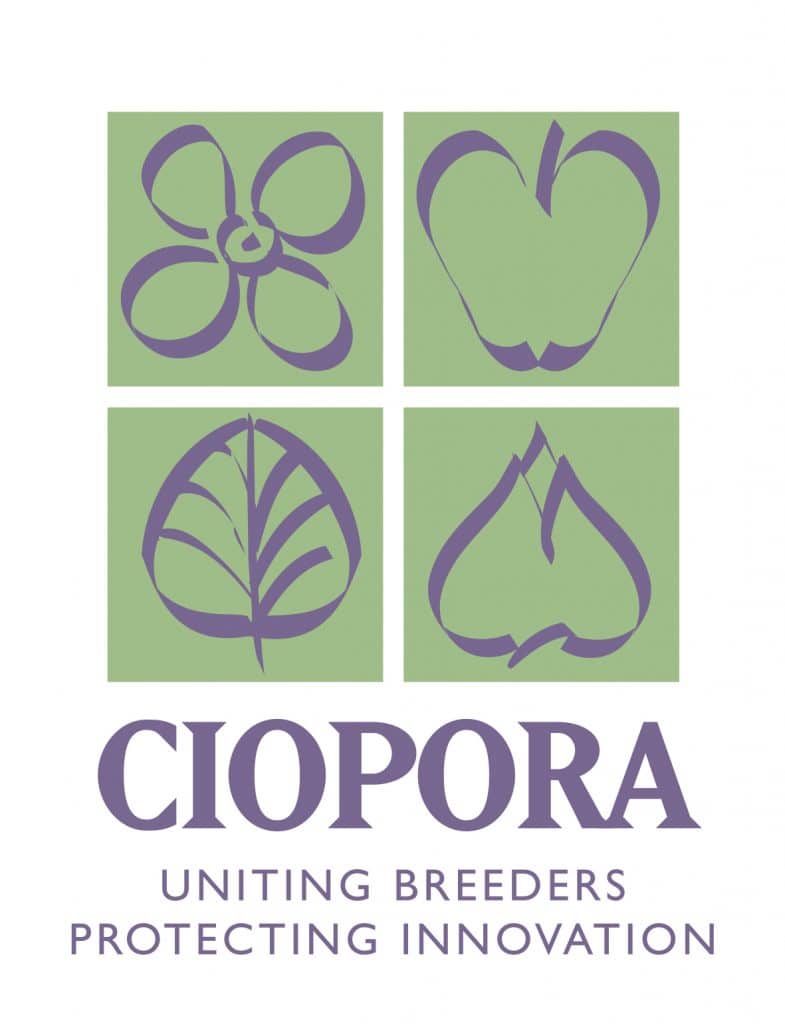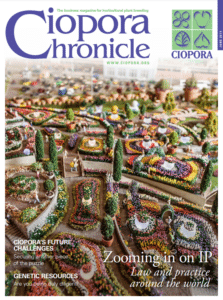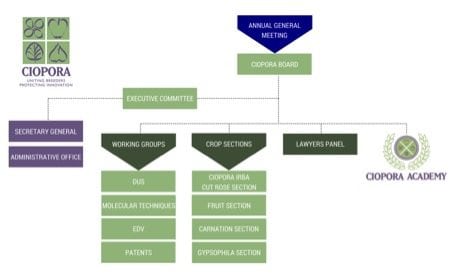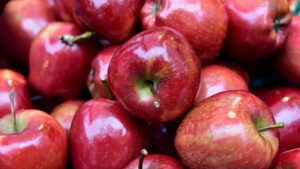CIOPORA has been leading the establishment of effective IP systems for plants worldwide for more than 55 years
It’s safe to say that the general public relates more to seed-related agriculture than to vegetative horticulture. The famous proverb says, “All of the flowers of tomorrow are in the seeds of today”. At CIOPORA, we know that this is not entirely true: many flowers are propagated through cuttings. Even less recognized is the fact that the ornamental and fruit varieties, along with many other consumer products, are the result of an elaborate and innovative process — the bounties of specialized labour and intellectual activity — which require protection under a well-established intellectual property (IP) regime.
Plant breeding is a time- and cost-consuming process. For many breeders, it can take more than a decade to develop a new plant variety with an enhanced set of characteristics. Think, for example, of a thicker petal on a rose or a crisper bite to an apple. The continuous progress in breeding of ornamentals and fruits, as well as the great diversity of horticultural products on the market, can only be guaranteed by means of effective IP protection for the innovation-based plant breeding businesses.
CIOPORA – the Mission Behind the Acronym
CIOPORA is the International Community of Breeders of Asexually Reproduced Ornamental and Fruit Plants or, or in its French form, Communauté Internationale des Obtenteurs de Plantes Ornementales et Fruitières à Reproduction Asexuée. The association was founded by a group of rose breeders in Geneva, Switzerland, on Feb. 4, 1961. Later that same year, the cornerstone of a worldwide system for Plant Variety Protection (PVP) was laid when the International Union for the Protection of New Varieties of Plants (UPOV) was established by the International Convention for the Protection of New Varieties of Plants in Paris. Today, more than half a century later and after three revisions of the UPOV Convention, CIOPORA remains the only international organization representing the interests of breeders in the ornamental and fruit sectors whose varieties account for approximately 60-70 per cent of all Plant Breeders’ Rights titles and plant patents granted – solely in regard to their IP rights.
Since its inception, CIOPORA’s mission has been clear: to create an association of companies and organizations with the shared belief in the value of IP and the importance of efficient IP protection for the sustainable development of the horticulture sector and society at large. The goals and objectives of CIOPORA are:
- to group the breeders of asexually reproduced ornamental and fruit varieties at an international level;
- to promote the understanding of the necessity of international protection of the IP of the breeders, and to encourage further development of the protection of IP;
- to defend and represent the breeders’ legitimate interests and particularly to work for the development, improvement and unification of national and international regulations for the protection of breeders’ rights and of the laws for the enforcement of such rights;
- to elaborate and transfer information about the laws on the protection of IP to the association’s members.
These goals and objectives, as defined by the bylaws of CIOPORA, create a structured foundation for the association.
Membership
Contrary to other international associations such as the International Seed Federation (ISF), CIOPORA does not mainly consist of national or regional associations but rather of individual companies. Today, the association consists of 110 members, mainly breeders, but also national breeder associations, IP lawyers, and consultants from more than 25 countries worldwide. While our association was founded and built primarily by ornamental breeders, CIOPORA’s membership by fruit breeders has surged in the last few years.
Our members are enterprises of all sizes; however, the majority of CIOPORA members are small-to-medium sized companies. These innovative plant breeders are often family-owned, in their third or fourth generation. Directly and indirectly via its members, CIOPORA represents approximately 300 breeders worldwide on IP matters.
The Structure of CIOPORA
The highest governing body in CIOPORA meets at its annual general meeting (AGM), at which all decisions about the general direction of the association and the IP positions are made. Between these annual events, the control of the affairs and property of the association and the implementation of the decisions of the AGM is led by the CIOPORA board. An executive committee guides the day-to-day operations of CIOPORA’s four-person administrative staff led by the secretary general.
CIOPORA’s “Working Groups” are small committees of individuals who work deeply in the matters of (currently) DUS, molecular techniques, essentially derived varieties and patents. These committees meet regularly and prepare the first drafts of possible IP Positions, which then have to be approved by the board and finally by the AGM.
Crop sections, of which CIOPORA currently has four — Cut Rose (called IRBA), Fruit, Carnation and Gypsophila — are committees made up of breeders within the same species. These committees meet regularly, once at the CIOPORA AGM and often in conjunction with international trade shows, to uncover issues within their crop-specific communities.
The representation of CIOPORA in technical matters lies in the hands of the two head technical experts (HTEs) for ornamentals and fruits, which are assisted by vice-HTEs and crop leaders, who are experts in specific crops.
Where CIOPORA Steps in
The other mission of CIOPORA is promotion of IP and advocacy. This takes repeated efforts, around the globe, on a consistent basis. The foundation of this advocacy is to represent the interests of breeders before the national and supranational policymaking authorities — those that ultimately create the laws by which the players in the horticulture chain must comply. On the international level, our main counterpart is UPOV, but CIOPORA is also active in the World Intellectual Property Organization (WIPO) and the World Trade Organization (WTO). CIOPORA is one of the oldest and most-involved observers in the administrative, legal and technical bodies of UPOV, which allows the association to actively participate in the decision-making process of this organization.
Some still see CIOPORA as a European organization, but this is not true. While CIOPORA has its roots in Europe, it is a truly worldwide association, with members and activities on all five continents. Of course, due to its size and structure, CIOPORA cannot be active all over the world with the same intensity and it must set priorities. Therefore, on a national level, CIOPORA members identify countries of particular interest, those where current or future business lies and those with PBR regimes that need significant improvement. CIOPORA then seeks stronger engagement in these target territories by establishing a dialogue with authorities in charge, running an analysis of the current PBR regime and enforcement options, consulting the local legal experts and reporting our findings to our members. We carry out regular member surveys to identify the countries of special interest.
Sharing Knowledge
Advocacy is a moot effort without promoting the importance of IP to the actual players in the industry. CIOPORA works consistently to raise the level of awareness about general IP in horticulture as well as the most-current issues affecting the industry via direct communication to members, such as our IP Chapters newsletter and email updates, as well as public communication from speaking engagements at conferences around the world and the annual CIOPORA Chronicle.
In addition to communication, CIOPORA has turned its focus to education with the 2015 launch of the first educational series focused solely on IP Education for the horticulture industry — the CIOPORA Academy.
Acceptance of IP Protection for Plants is Alarmingly Low
The acceptance of IP protection varies depending on the industry and product. Take, for example, the copyrights of musical artists. Since Metallica famously, and successfully, sued file-sharing platform Napster in 2000, it has become recognized by the general public that the IP of musicians deserves to be acknowledged and protected. For plants — particularly in agriculture — the acceptance of IP protection is alarmingly low and it is permanently challenged, not only by NGOs.
Surprisingly, even some breeder organizations seem to not be in full favour of strong and effective IP protection for plant varieties, not even in the form of Plant Breeders´ Rights. Patents for plant innovations are considered by many to be evil, per se. Nobody has been able to explain to me why patents for life-saving pharmaceuticals are OK, but for plants they are evil, or why Plant Breeders´ Rights are so much weaker than patents.
Regardless of these perceptions, we must face the fact that several countries in the world are not willing to provide effective IP protection for varieties. It seems the resistance to protect agricultural crops, i.e. basic food crops, is higher than the resistance to protect ornamentals and fruits. However, in their IP laws these countries don´t differentiate between agricultural and horticultural crops.
At least for ornamental and fruit varieties, CIOPORA sees no justification to have less effective protection than IP holders in other sectors. And we have prominent supporters. Josef Straus, emeritus director of the Max Planck Institute for Intellectual Property, Competition and Tax Law in Munich and former head of the Munich Intellectual Property Law Center, once said at a CIOPORA symposium, “With the exception of the necessity to access protected/patented material — even better provided for by deposits complementing written description for patents — no legal/economic justification exists to treat innovations/inventions and innovators/inventors of ornamentals and fruit trees any different than those in other areas of technology.”
CIOPORA’s IP Positions are demanding
It is well known that CIOPORA and its members are quite demanding when it comes to the level of IP protection for their plant varieties. This is because no other protection exists for vegetatively reproduced ornamental and fruit varieties — we do not, for example, work with F1 hybrids, which have a built-in protection against easy propagation. We have only IP protection. Recently vegetable breeders seem to better understand this, due to the fact that growers have started to vegetatively propagate seed crops such as tomatoes.
In its three last annual general meetings in The Hague (2014), Hamburg (2015) and Lisbon (2016), CIOPORA has intensively discussed and approved position papers on several aspects of Plant Breeders´ Rights. The last piece of the positions was finalized in 2016 with the Position Paper on Essentially Derived Varieties (EDV). The new position of CIOPORA on Plant Breeders´ Rights[1] now consists of six chapters, with the titles “Scope of the Right”, “Essentially Derived Varieties”, “Minimum Distance”, “Breeders´ Exemption”, “Exhaustion” and “General PBR Matters”. All of the positions clearly demonstrate the desire of the CIOPORA members to have much more effective protection for their innovations and to have better defined regulations.
There is not room here to elaborate on all issues in the existing PBR regime, so we need to focus on the main issues. While agricultural breeders seem to be mostly concerned about the farmers´ exemption (some call it farmers´ privilege or farmers´ right), CIOPORA and its members are concerned about the narrow scope of the PBR (which does not protect the final product but only propagating material) about the very complicated and unclear concept of Essentially Derived Varieties (EDV) and about too-small distances between varieties.
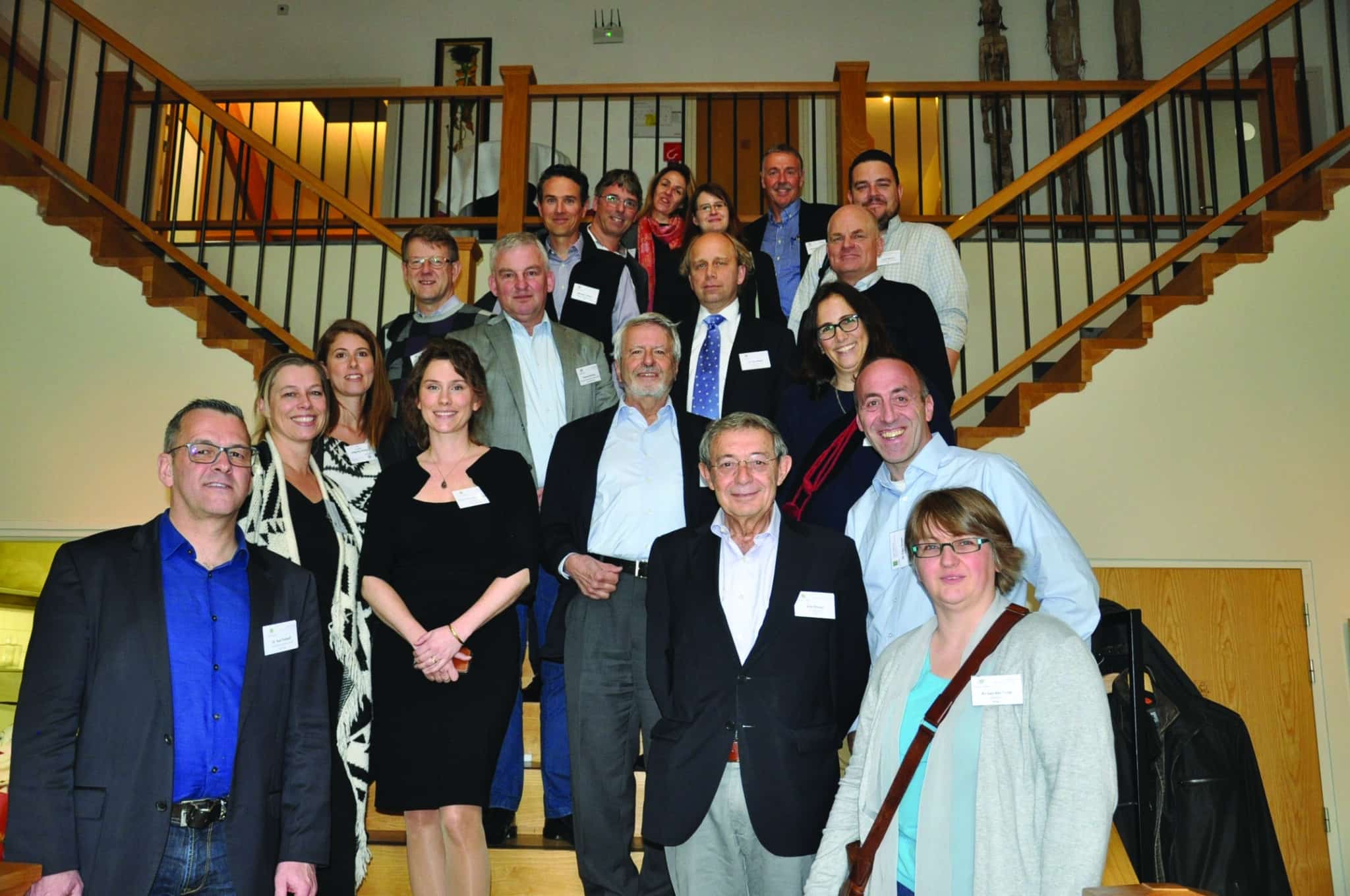
A PBR Law for Ornamentals and Fruits Must Cover the Final Product
An IP system, in order to be truly effective, must cover all applications/products of the protected invention (as is the case, for example, in patents). The PBR system is the only IP system which covers only a part of the material of the protected invention (the variety), namely the propagating material. Harvested material is only protected under certain conditions. If it has been produced from legally obtained propagating material, there is a realistic chance that it is no longer covered by the PBR — neither in the country of production nor in other countries.
This is why CIOPORA requests that propagating material, harvested material and products that are obtained directly from material of a protected variety must be protected directly per se. This is only an intermediate step — the concept of propagating material must be interpreted in a broad way, so that it covers each and any material which is capable of producing entire plants true-to-type.
Of course, a fair and balanced law must secure that the exercise of the right is not excessive and takes place only once for plant material in a protected territory. But this must not be solved by excluding material from protection, but rather by way of exhaustion. Exhaustion is a generally accepted concept for the balancing of IP Rights and has the effect that products — which have been marketed by the title-holder or with his consent, in the protected territory — fall in the public domain in this territory, therefore the titleholder can exert his right to said products only once in this territory. Very important is that exhaustion is and must be a national concept, with the consequence that authorized production and trade of plant material in one country does not result in the exhaustion of the IP Right for this material in another country.
If a breeder has parallel PBR titles in countries other than the producing country, the breeder must be able to control the import of each and any plant material (produced with or without authorization) into these other countries. Patent and trademark holders are able to do this as well.
A clarification and extension of the scope of protection and its exhaustion is in the benefit of the entire production and trade chain. Clarity is a precondition to establish fair competition. Lack of clarity is used mainly by dishonest players who benefit at the cost of the honest. Licensees of breeders want them to enforce their rights against infringers in a robust way in order to establish a level playing field for all. Therefore, a sufficiently broad scope of protection, covering all products of a variety, is necessary. This will not change the situation for the licensees of the breeders, but only for the dishonest players.
However, the recent discussions in UPOV about propagating material and harvested material, initiated by CIOPORA, demonstrate that UPOV does not offer a definition of its key term “propagating material” and the UPOV members are far from offering a harmonized and sufficiently broad protection or having at least a common understanding of what propagating material is. As a result, several definitions of the term exist within the UPOV countries, so that the material in one territory is considered to be propagating material, while it is harvested material in another. Additionally, in many countries a very narrow concept of propagating material exists, which leaves most of the plant material without protection.
Mutants and GMOs are Essentially Derived Varieties
The very reason for the introduction of the Essentially Derived Varieties (EDV) concept in the UPOV 1991 Act was to strengthen the breeders´ right, particularly by creating a balance between biotechnology inventors and traditional breeders, and to bringing mutations under the scope of protection of their initial variety. CIOPORA, therefore, maintains that mutants and GMOs — as far as they are distinct from the initial variety — are EDVs whenever they retain a very high genetic conformity to the initial variety as established by the panel of experts, because mutants and GMOs per definition are predominantly derived from the initial variety.
The entanglement of dependency and plagiarism — as supported by some — is a mistake in the conception of the EDV provision. Plagiarism is not a question of derivation or dependency, but rather a question of minimum distance and direct infringement. If a variety in its phenotype very much resembles a protected variety, it is not clearly distinguishable from the protected variety and its commercialization is a direct infringement, irrespective of whether the new variety is (essentially) derived from the protected variety or not.
We are aware that the position of CIOPORA is not in line with the position of seed breeders in this question, because the seed breeders have a different take on minimum distance and derivation. However, as mutation breeding to a far larger extent takes place in the CIOPORA crops, we should work together towards a better understanding and mutual support of these concepts.
On Minimum Distance
A sufficiently broad minimum distance between varieties is one of the most important requirements for effective PBR protection. Without a sufficient distance, the exclusive right of the holder of a protected variety is weakened. If PBR protection is granted for other, very similar varieties, these other varieties are considered to be clearly distinguishable from the protected variety and thus fall out of the scope of the protection of this variety. If a breeder does not have exclusivity for his variety, the breeder cannot grant exclusivity to his propagators or growers. As such, competitors of the propagators or growers can produce a very similar product. The result is overproduction combined with undercutting competition.
Conflicting approaches also exist between ornamental and fruit breeders on one side and vegetable and agricultural breeders on the other. The latter seem to advocate even smaller distances between varieties. The reason might be the added value in vegetable and agricultural varieties often lies in traits, which are not considered to be phenotypic (such as disease resistances). Additionally, in agriculture you have the official Value for Cultivation and Use (VCU). The positive result of the VCU assessment of the variety is the precondition to enter it into the national list. The result also serves as a promotion tool for the breeders, because in the VCU assessment the commercially important characteristics of a variety are assessed. In ornamentals and most fruit there is no such VCU.
Different Levels of Protection Might be the Solution
Ornamental, fruit, vegetable and agricultural breeders all sit in the same boat when it comes to IP protection. The priorities and focus might differ depending on the particularities of the crop, but in general all breeders require effective IP protection and enforcement measures. However, if for political reasons it is not possible to achieve more effective protection for all crops, one might think about different protection levels for different sectors. For the breeders of vegetatively reproduced ornamental and fruit varieties, it is crucial to have direct protection of the flowers and fruits, i.e. of the final products, to have mutants and GMOs considered as EDV and to have sufficient minimum distances. CIOPORA will continue to strive for this.
Dr. Edgar Krieger is the Secretary-General at CIOPORA.
[1]http://www.ciopora.org/fileadmin/assets/pageDownloads/CIOPORA_Papers/CIOPORA_Position_Papers_on_PBR_2016/CIOPORA_Position_Papers_on_PBR_2016.pdf


